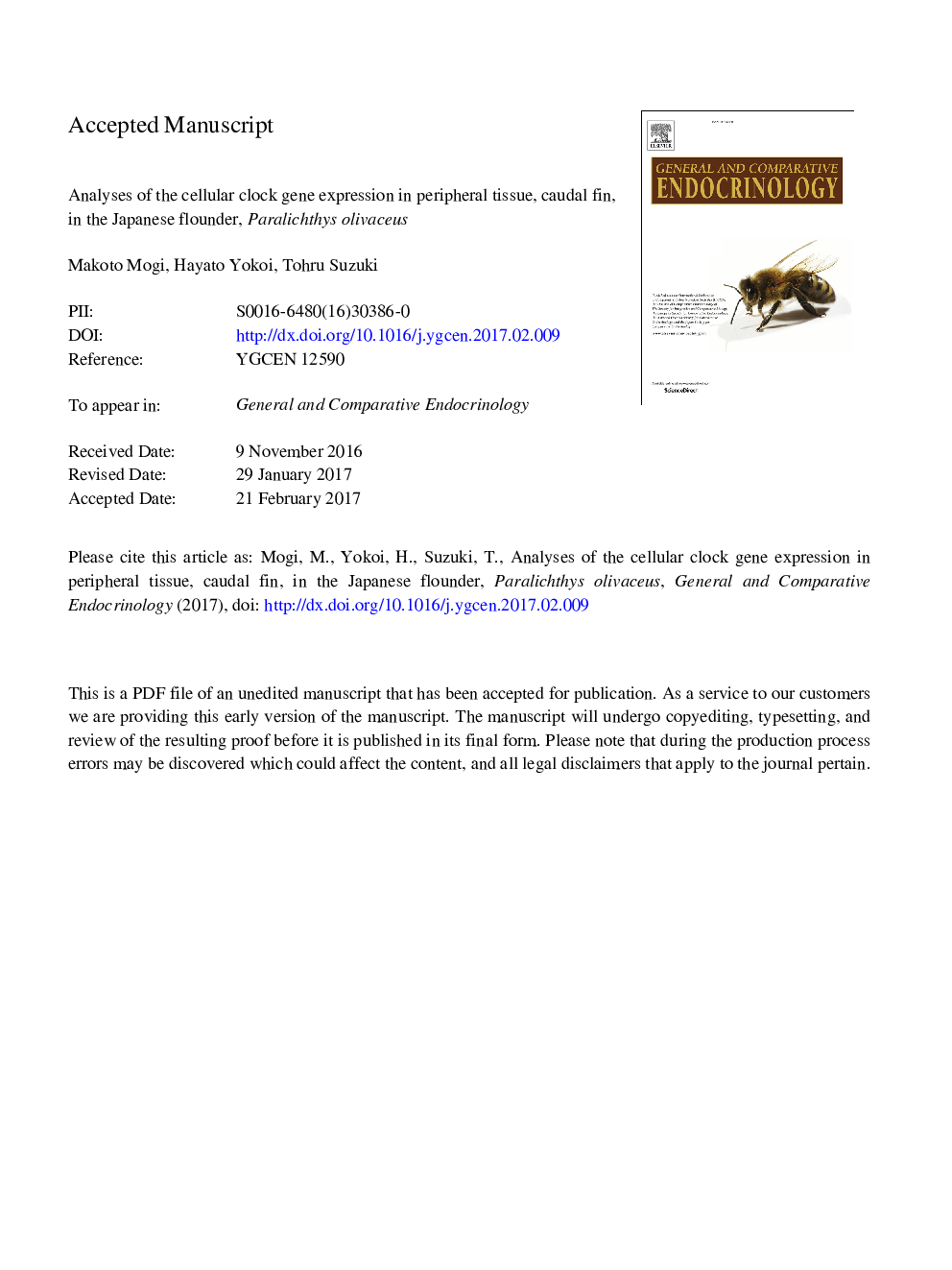| کد مقاله | کد نشریه | سال انتشار | مقاله انگلیسی | نسخه تمام متن |
|---|---|---|---|---|
| 5587713 | 1568859 | 2017 | 29 صفحه PDF | دانلود رایگان |
عنوان انگلیسی مقاله ISI
Analyses of the cellular clock gene expression in peripheral tissue, caudal fin, in the Japanese flounder, Paralichthys olivaceus
دانلود مقاله + سفارش ترجمه
دانلود مقاله ISI انگلیسی
رایگان برای ایرانیان
کلمات کلیدی
موضوعات مرتبط
علوم زیستی و بیوفناوری
بیوشیمی، ژنتیک و زیست شناسی مولکولی
علوم غدد
پیش نمایش صفحه اول مقاله

چکیده انگلیسی
Understanding the systems for maintaining the circadian rhythms that give organisms the flexibility to adapt to environmental changes is important in both aquaculture and fish chronobiology, because nursery lighting conditions can affect the survival and growth rates of larvae. We previously demonstrated that in flounder, the suprachiasmatic nucleus (SCN) exhibits daily rhythm in per2 expression, in sharp contrast to zebrafish, in which the SCN does not exhibit clear per2 expression rhythm. To examine whether a hierarchy exists in systems that maintain the expression rhythm of peripheral clock genes in flounder, in the present study we analyzed the in vivo and in vitro expression of three clock genes, per2, per1, and cry1, in the caudal fin and the effects of cortisol and melatonin administration on the expression of each clock gene. In vivo, the fin maintained a daily expression rhythm of all three genes, even in 24-h darkness (DD) when shifted from 12-h light:12-h dark (LD) conditions, but fin explants lost the expression rhythm after a short time of tissue culture, even under LD conditions. Cortisol, but not melatonin, significantly upregulated the expression of the three clock genes in fin both in vitro and in vivo. Therefore, we hypothesize that the SCN-pituitary-adrenal cortex pathway plays a role in the oscillation of the peripheral clock in flounder. However, in vivo, peak expression of per2 and cry1 was shifted 2-4Â h earlier under DD conditions, and their expression was upregulated in response to short exposures to light when larvae were kept under DD conditions. Therefore, we also hypothesize that in addition to the SCN, a light-responsive coordinating factor also functions in photo-entrainment of the peripheral clock in flounder.
ناشر
Database: Elsevier - ScienceDirect (ساینس دایرکت)
Journal: General and Comparative Endocrinology - Volume 248, 1 July 2017, Pages 97-105
Journal: General and Comparative Endocrinology - Volume 248, 1 July 2017, Pages 97-105
نویسندگان
Makoto Mogi, Hayato Yokoi, Tohru Suzuki,